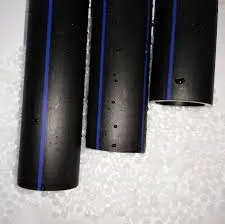Oct . 02, 2024 14:32 Back to list
High-Density Polyethylene Sprinkler Pipe Fixtures for Efficient Watering Solutions
Understanding HDPE Sprinkler Pipe Fittings A Comprehensive Overview
In modern agricultural practices and landscaping projects, efficient irrigation systems play a crucial role in ensuring optimal water distribution. One increasingly popular material for these systems is High-Density Polyethylene (HDPE). Known for its durability and flexibility, HDPE is often used in sprinkler pipe fittings, which facilitate the construction of reliable and efficient irrigation networks. In this article, we will delve into the properties, advantages, installation methods, and applications of HDPE sprinkler pipe fittings.
Properties of HDPE
HDPE is a thermoplastic polymer made from petroleum, recognized for its high strength-to-density ratio. This material is not only lightweight but also resistant to impact and corrosion, making it an ideal choice for outdoor use in varying climates. HDPE fittings are known for their smooth interior surfaces, which reduce friction and improve water flow, ensuring that irrigation systems efficiently deliver water to crops and gardens.
Advantages of HDPE Sprinkler Pipe Fittings
1. Durability HDPE fittings have a long lifespan, often exceeding 50 years with proper installation and maintenance. They can withstand extreme temperatures and are resistant to chemicals, ensuring that they are a worthwhile investment for both agricultural and industrial applications.
2. Flexibility The flexibility of HDPE allows for easier installation, especially in uneven terrains where traditional rigid piping would struggle. This adaptability minimizes the need for additional fittings, reducing installation time and costs.
3. Lightweight Compared to traditional materials like PVC or metal, HDPE is significantly lighter, making transportation and handling easier during installation. This lightweight feature is particularly advantageous for large-scale irrigation projects.
4. Environmentally Friendly HDPE is recyclable, which means that old fittings can be repurposed rather than ending up in landfills. Furthermore, the longevity and resistance to leaching of harmful chemicals make HDPE a safer choice for agricultural applications.
Installation Methods
hdpe sprinkler pipe fittings

The installation of HDPE sprinkler pipe fittings requires careful planning and execution to ensure optimal performance
. Generally, the process involves the following steps1. Planning Before installation, a detailed design of the irrigation system should be created, considering factors such as water requirements, land topography, and crop types.
2. Trenching A trench is dug to lay the pipes, ensuring that it is deep enough to protect the system from damage and freeze in colder climates.
3. Joining Fittings HDPE fittings can be joined using several methods, including butt fusion, electrofusion, or mechanical connections. The choice of joining technique depends on the specific type of fitting and installation conditions.
4. Testing Once installation is complete, the system should be tested for leaks and pressure to ensure all fittings are secure and functioning as intended.
Applications of HDPE Sprinkler Pipe Fittings
HDPE sprinkler pipe fittings are used in a variety of applications, including
- Agricultural Irrigation Farmers commonly employ HDPE systems for efficient water distribution, helping to increase crop yield and conserve water resources. - Landscaping Residential and commercial landscapers use HDPE in irrigation systems to maintain healthy lawns and gardens. - Industrial Applications HDPE is utilized in various industrial settings for transporting liquids, due to its chemical resistance and durability.
Conclusion
In conclusion, HDPE sprinkler pipe fittings represent a modern solution for efficient irrigation systems in agriculture and landscaping. Their numerous advantages—ranging from durability and flexibility to environmental friendliness—make them an excellent choice for any water distribution project. As the demand for sustainable agricultural practices continues to rise, HDPE fittings will likely play an increasingly vital role in shaping the future of irrigation technology.
-
PVC Transparent Sheet Roll - Durable & Flexible PVC Plastic Sheet Roll for Industrial & Home Use
NewsJun.24,2025
-
High-Quality PVC PPR Pipes and Fittings Durable ERA PPR Solutions
NewsJun.10,2025
-
High-Quality Large HDPE Sheets & Large Diameter PVC Pipe Durable Large PVC Pipe Supplier
NewsJun.10,2025
-
High Density Polyethylene Cutting Board - Durable & Food Safe
NewsJun.09,2025
-
3 Inch PVC Pipe for Durable Irrigation Affordable & Reliable
NewsJun.09,2025
-
Premium PPR Plastic Water Pipe Fittings - Durable & Leak-Free
NewsJun.09,2025

